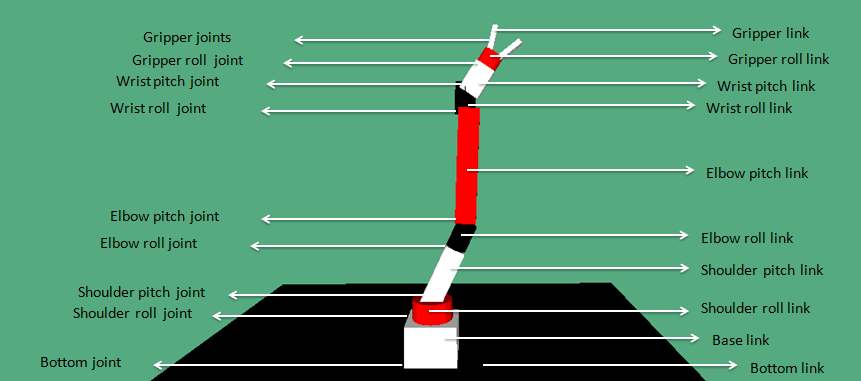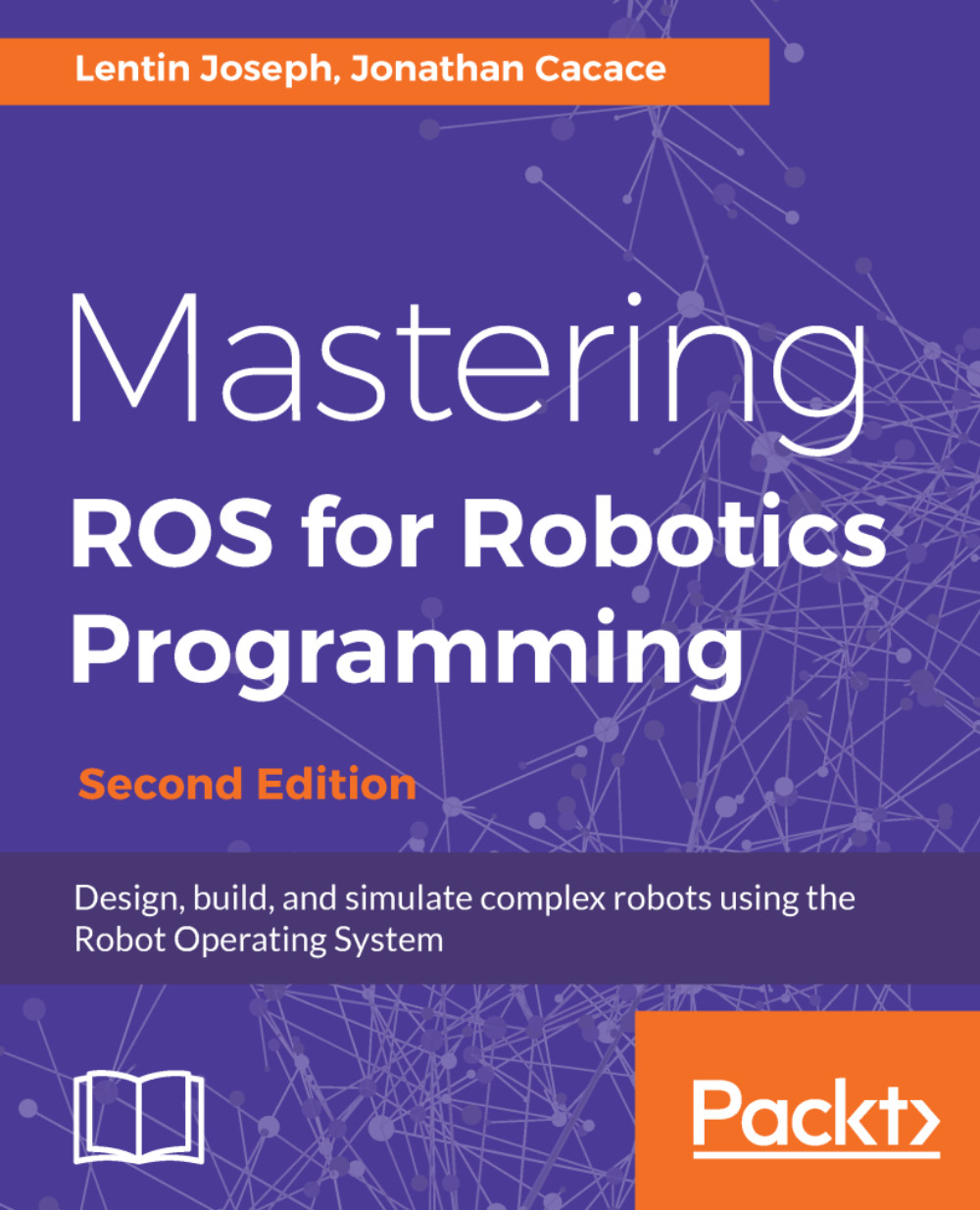Creating the robot description for a seven DOF robot manipulator
Now, we can create some complex robots using URDF and xacro. The first robot we are going to deal with is a seven DOF robotic arm, which is a serial link manipulator with multiple serial links. The seven DOF arm is kinematically redundant, which means it has more joints and DOF than required to achieve its goal position and orientation. The advantage of redundant manipulators is that we can have more joint configuration for a desired goal position and orientation. It will improve the flexibility and versatility of the robot movement and can implement effective collision-free motion in a robotic workspace.
Let's start creating the seven DOF arm; the final output model of the robot arm is shown here (the various joints and links in the robot are also marked on the image):

Figure 8: Joints and Links of seven DOF arm robot
The preceding robot is described using xacro. We can take the actual description file from the cloned repository...






























































